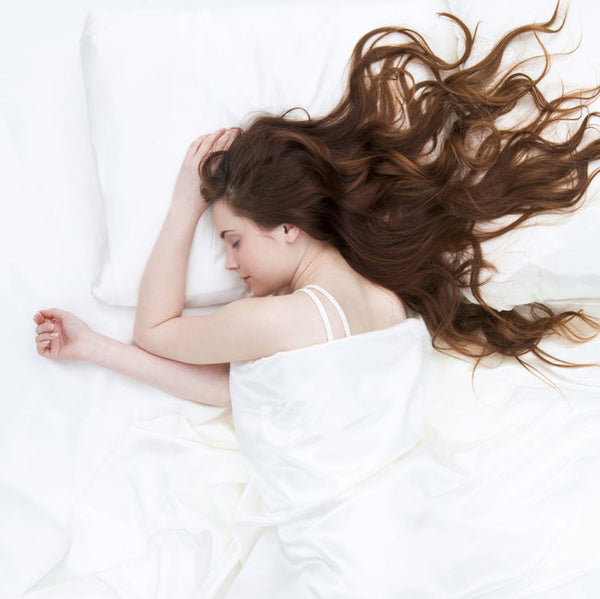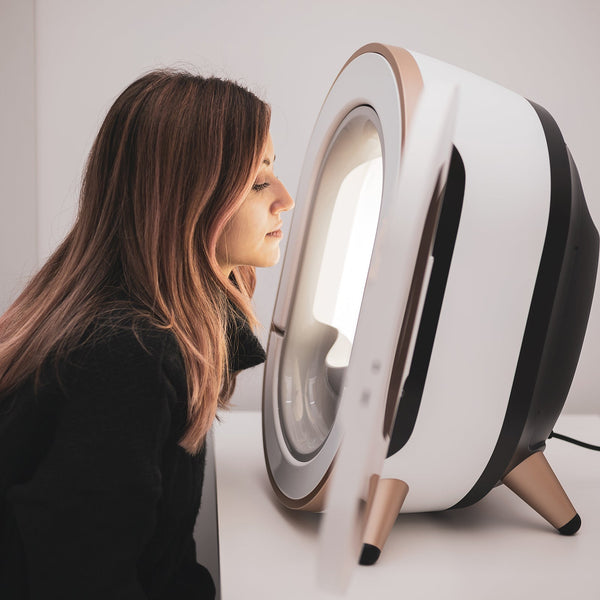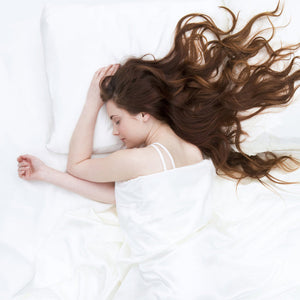Shifting Anti-aging Marketing to GenZ and Millennials

If you’re anything like I am, 1990 feels like it was just 10 years ago. Growing up in the Soviet Union in the 90s, I had a happy device-free childhood filled with friends, outdoor activities, crafts and books. After we moved to Los Angeles, my mom bought me my first computer in 1996 - it was a big grey PC with dial-up internet and AIM (AOL Instant messenger). I remember how I rushed from school to check if any of my friends were online then. So much has changed since those years; kids born 1997 – 2012 are the first to have not experienced life before the internet, and to have widespread access to portable digital technology at a young age. This year, the oldest children of Generation Z will turn 25, and these young men and women are well informed of the latest trends in fashion and beauty. Moreover, they are already no strangers to cosmetic procedures such as facial fillers and body contouring. With thousands of YouTubers, Instagram influencers and TikTokers handing out beauty advice on their platforms, it’s easy to see how masking and Botox have become the norm for this young generation.
Fifteen years ago, before invasive procedures and fillers in twenty-somethings were normalized by influencers, Botox was considered taboo. Today, in an effort to obtain perfectly chiseled facial features and flawless skin, more twenty-somethings than ever are opting for beauty shots. According to the American Society of Plastic Surgeons, botulinum toxin procedures have increased 28% since 2010 among 20 to 29-year-olds. In fact, Gen Z consumers have been named the biggest group of beauty spenders with female Gen Z’ers spending $368 annually on beauty, as of 2020, up 18% from 2019, according to a recent report by WGSN. A survey by The Pull Agency found that 60% of Gen Z’ers purchase beauty products before they are 14 years old, compared to just 39% of millennials and 23% of those over 55. Another study found that Gen Z are 10% more likely to have a facial care routine than millennials, with 3 out of 4 stating they started using a facial moisturizer and cleanser before the age of 18.
My mother, an esthetician with 20 years of experience, has never had injections of any kind, and relied on the pillars of esthetic knowledge: SPF, facial massage, hydration, exfoliation, and tools such as galvanic and microcurrent. The estheticians of today are more open-minded to Botox and fillers than they were in my mother’s time, and so are our clients. While it’s typically reasonable to start beauty shots in the late 30s, more and more younger women seek “preventative” Botox. Patients as young as 20 have started using the neurotoxin to “prevent” forehead lines. In fact, according to the American Society of Plastic Surgeons, botulinum toxin procedures have increased 28% since 2010 among 20 to 29-year-olds. While this concept may sound good, numbing facial muscles at such a young age can contribute to muscle atrophy and droopiness down the road. Enter Baby Botox – no, it’s not what you think… it’s a new technique of toxin application, where “less is more”. Younger patients, such as Millennials and Gen Z’ers are choosing this entry-level Botox treatment that stipulates fewer units administered superficially to give a fresh-faced natural look. The face looks softer, and less “frozen”, allowing for facial expressions.
If you gathered “prevention” is the theme of this article, you are correct – there are plenty of esthetic treatments to maintain young skin and prevent premature aging. Teens have a substantial spending power, and their parents gladly pay for results-driven treatments and products if they deem them essential. When marketing to younger clients, don’t just promote the treatment itself, but add on home-care education and retail products. At their young age, puberty hormones can wreak havoc on their skin, so keep the focus on clear and healthy skin. It just so happens that the biggest trend we are seeing this year is skinimalism: women are wearing less makeup, adapting a simpler skincare routine, and showcasing their natural skin instead of masking it. I’m not a fan of lengthy spa menus, and always advise creating a custom facial for every client, including teens. A simple but effective treatment incorporating cleansing and extractions, high frequency, a hydrating hyaluronic acid treatment mask under an LED panel (415nm and 630nm works best for P acnes bacteria), an ice globe massage and sunscreen application. Too many facial massages or bells and whistles may deter parents from purchasing regular facials for their Gen Z teens, deeming it a luxury, and not a necessity.
What products appeal most to the younger clients? According to Nielsen Global Survey from 2018, 80% of Gen Z’ers feel strongly that companies should help the environment, in fact, Gen Z are 20% more likely than millennials to exclusively use natural skincare products. They scrutinize ingredients and packaging, searching out sustainable and vegan options, as well as non-toxic ingredients. This generation is not impressed by opulent packaging or big brand advertisement, but rather by a brand’s story and mission statement. A new Facebook report found that 60% of Gen Z’ers expect brands to contribute to society. Typically, this is a contribution to sustainability and protecting the environment. Currently, a number of big cosmetic brands are in process of achieving net zero emissions, sustainable and refillable packaging, and fully biodegradable and upcycled ingredients. As 1.3 billion tons of food is wasted every year, resulting in a carbon and water footprint, and releasing greenhouse gas, manufacturers are upcycling imperfect and discarded produce. Exfoliators are being formulated using used coffee grounds, leftover lemon and orange peels, and discarded seeds.
The Gen Z home care protocol shouldn’t be overly complicated, or include too many products, but have the basic cleanser, toner, oil control mask, nighttime spot treatment for stubborn breakouts, a plain moisturizer and a good natural sunscreen. Preferably fragrance-free, and natural, keeping in mind their preference for clean formulation. If you retail makeup, such as foundation, it will be beneficial to offer a makeup consultation to teens, to help them select the cleanest and most appropriate coverage that will not interfere with their skin treatments.
For Millennials like me (those born roughly 1981 to 1996), the custom facial structure still stands, but should include cleansing, an enzyme exfoliation, extractions, a toning and stimulating facial and buccal massage or facial cupping, LED (605nm, 630nm, 660nm and 855nm are best for collagen production), microcurrent or radio frequency treatment paired with peptides and hyaluronic acid, and sunscreen application. I’m a big proponent of facial massage – it promotes circulation, moves stagnation, tones facial muscles, relieves tension, and de-puffs the face. Buccal massage – a massage of the oral cavity, has been gaining popularity in the last 2 years, celebrities are asking for this treatment because of its lymphatic drainage benefits, and jaw tension release. Paired with facial cupping, Gua Sha and microcurrent, the results are like that of a non-surgical face-lift. The key is - outstanding results achieved in a non-invasive way lead to better skin quality, more blood flow to the tissues, a stronger barrier, and a supple muscle tone. This cannot be achieved by Botox or fillers; one has to commit to regular facial appointments and home care.
Home care options for the Millennial market are abundant – the most popular skincare ingredients of the last 2 years have been Niacinamide, Hyaluronic Acid, CBD, Bakuchiol, Turmeric, Tretinoin, Glycolic Acid and various facial oils. Some of the trending IG content of 2020 among Millennials was Gua Sha and jade roller massage, tiny skincare fridges, and jelly masks, while the trends in product included probiotic skincare that maintains the skin’s microbiome, and personalized skincare.
A home care routine for the Millennial customer will include cleansing, toning, a hydrating mask, serum, crème and sunscreen. Specialty products treating hyperpigmentation, under-eye dark circles, lash and brow growth, and lip care are also popular for this demographic. In contrast with Baby Boomers, who shop for neck care, devices, and nighttime moisturizers, Millennials are just getting into anti-aging homecare, even though many have had Botox and fillers on a regular basis.
This year, we also saw an emergence of a new category of skincare - blue-light blocking products. With quarantine home-isolation, and Zoom meetings at an all-time high, people are spending hours in front of their devices, for work, and otherwise. Blue light, a high-energy visible light, refers to light wavelengths between 390 -500nm emitted from phones and computer screens. Blue light penetrates farther into the skin than both UVA and UVB and uses a higher level of energy than infrared light triggering oxidative stress, contributing to glycation and photoaging, and impairing the barrier. The best combination of ingredients to provide adequate defense against blue light is antioxidants paired with physical blocs such as Titanium Dioxide and Zinc Oxide. This type of product is shaping up to be a great fit for all demographics, no matter the age group.
The last few years have ushered in a whole new standard of diversity and inclusivity within the beauty industry. 2020 has been big for Black and Brown Beauty – with many distributors seeking out rising star brands owned by African Americans and Latinx people. E-commerce sites, essentially collectives, like Thirteen Lune curate beauty brands created by Black and Brown founders that resonate with people of all ethnicities. Sunscreens that don’t leave annoying chalky residue, hyperpigmentation products, hydrating hair masks and oils are just a few of the innovative trending products in the ethnic beauty category. Many salon chains and retailers are taking note and making a commitment to the 15% pledge by reserving a minimum of 15% of their shelf for Black-owned businesses.
Although COVID had caused quite a drop of cosmetic sales in the first quarter of 2020, by the end of the year, facial cosmetic sales in the U.S. pulled through, generating approximately 1.9 billion U.S. dollars. The boom in pampering and self-care beauty categories, included candles, aromatherapy, and detox products; sales of skin, nail, and hair-care products. In the past, retail sales of beauty products have largely come from brick-and-mortar stores, with a relatively low share of revenue flowing through the web. But during COVID, with consumers turning to online purchasing in lieu of shopping in stores, online sales of cosmetics, skin and hair care products have grown 25% in the first half of 2020 (January-July) compared with the same year-ago period. Considering that Gen Z’ers and Millennials do most of their shopping online, this is a great way to keep them re-purchasing the correct home care products, even in times of lockdown, and restrictions on personal care services.
Many estheticians have taken note, creating shopping carts on their sites, and taking advantage of manufacturers’ drop-shipping programs. Online retailing is as easy as setting up a shopping cart option on the spa’s website. It can be done by a web designer, and the payments can be processed by regular credit cards, as well as by PayPal - all that’s needed is a business bank account, and the right software. To successfully retail products online, you need an approval from the manufacturer – most, like me, prohibit underselling. Underselling essentially means selling below the MSRP (manufacturer’s suggested retail price). While it may not be an issue to sell cheaper in person at the salon, selling online at discounted prices is discouraged. In addition to pricing issues, estheticians who sell professional products on their site have to make sure the directions and skin type information is listed in a detailed fashion on their site. When consumers purchase online, they are often confused as to which product suits them best, and how to utilize it, unless consulted by the esthetician prior to purchasing. Try to set up a consultation, albeit a virtual one, when you see new customers purchasing professional products from your site – they will be pleasantly surprised to discover you are glad to direct them to the best and correct products uniquely for their skin.









